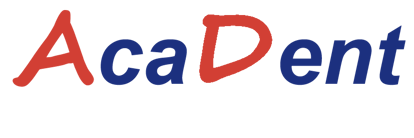Effective Note Taking for Dental Administrative Assistants
In a busy dental clinic, every detail counts — especially the way information is captured and transmitted. The dental administrative assistant, often the first point of contact for patients, plays a vital role not only in welcoming patients and managing appointments but also in ensuring that communication flows seamlessly between the team members.
One of the most important skills in this role is effective note-taking. Clear, structured, and accurate notes help prevent misunderstandings, ensure professional follow-ups, and maintain the clinic’s reputation for organization and reliability.
Why Is Note-Taking So Important in a Dental Office?
Each day, the dental administrative assistant takes messages for the dentist or hygienist, writes down information from patient calls, transmits requests, and records important observations.
If any of this information is incomplete or unclear, it can lead to scheduling errors, patient dissatisfaction, or even treatment delays.
Good note-taking is therefore an essential communication skill that supports both patient care and team efficiency.
Best Practices for Effective Note-Taking
1. Practice Active Listening
Before writing anything, take the time to listen carefully to the patient or caller. Identify the key details: who is calling, what the issue is, how urgent it is, and what action is expected.
Active listening helps reduce errors and ensures that all important information is captured accurately.
2. Use Standard Abbreviations
Abbreviations are a powerful tool to save time while keeping notes consistent and easy to understand. However, it’s important that all team members use the same abbreviations to avoid confusion.
Here are some of the most common abbreviations used in English-speaking dental offices:
| Abbreviation | Meaning |
| pt | patient |
| Dr or D | dentist |
| appt | appointment |
| c/b | call back / reminder |
| msg | message |
| tx | treatment |
| hy | hygienist |
| cons | consultation |
| Emerg or ER | emergency |
| vis | visit |
| avail | availability |
| F/U | follow-up |
| am | morning |
| pm | afternoon |
3. Structure the Information Clearly
Organize your notes with a simple, logical structure. This ensures that anyone reading them can understand the situation at a glance.
Structure example:
- Who: the patient or caller’s name
- Why: the reason for the message
- When: date and time of the call or action
- Action: what needs to be done (call back, confirm appointment, clinical follow-up, etc.)
4. Prioritize Clarity and Legibility
Even when using abbreviations, your notes must remain readable and professional. Whether written by hand or entered in the dental software, accurate and legible notes prevent mistakes and save time for the entire team.
Example of a Quick and Clear Note
10:45 – msg pt Mrs. Blanchett – c/b Dr Smith tx crown 27 – avail Tue am
Translation: At 10:45, Mrs. Blanchett left a message asking Dr. Smith to call her back regarding a crown treatment on tooth 27. She is available Tuesday morning.
This simple, structured note contains all the essential information — clear, concise, and easy for anyone to understand.
Note-Taking: A Strategic Skill for Dental Administrative Assistants
Although it may seem like a small task, effective note-taking is a strategic professional skill for any dental administrative assistant.
By mastering this ability, you contribute directly to:
- smoother internal communication,
- better quality of care, and
- improved patient satisfaction and retention.
Strong note-taking skills not only make your work more efficient — they also help you stand out as a key member of the dental team.
